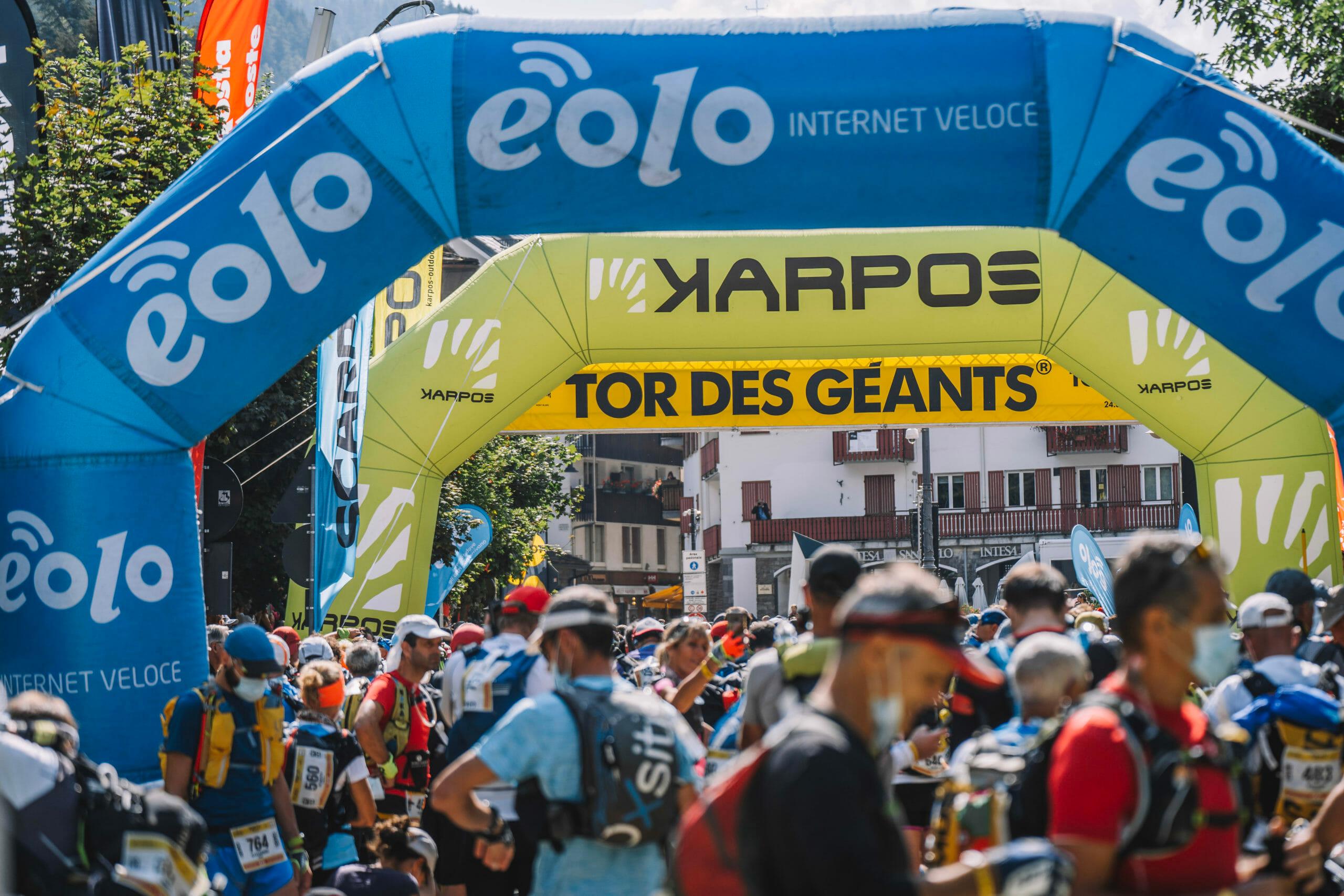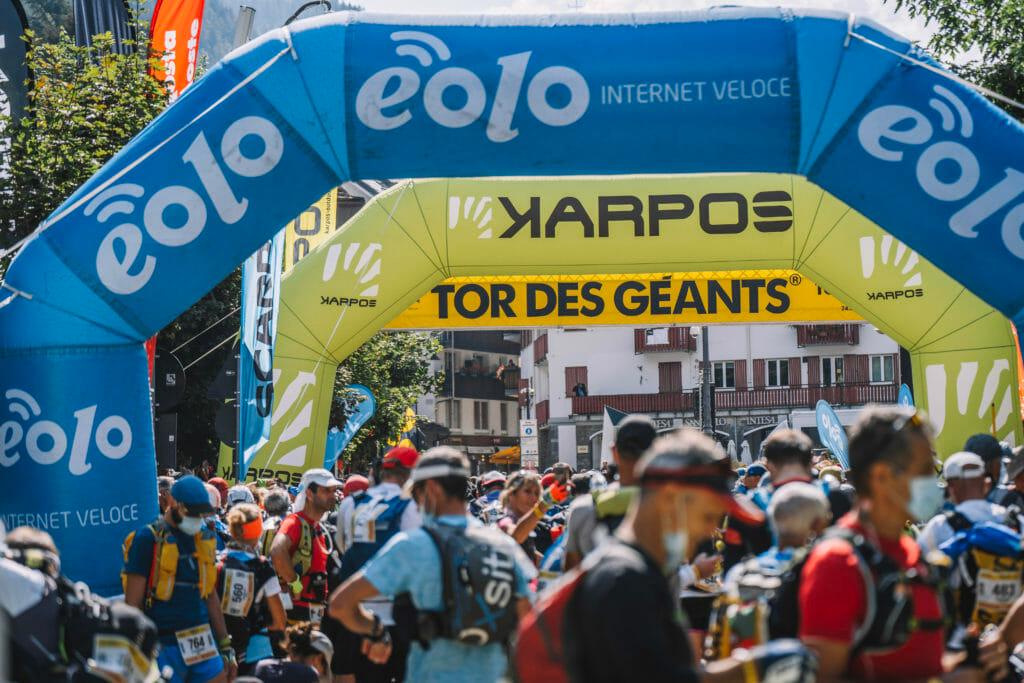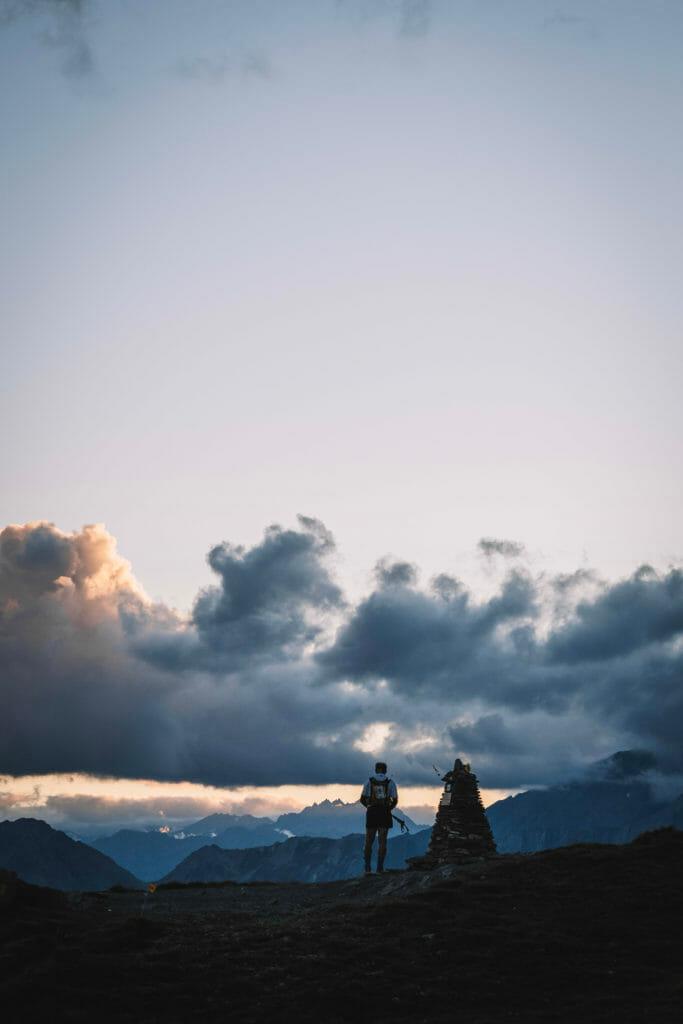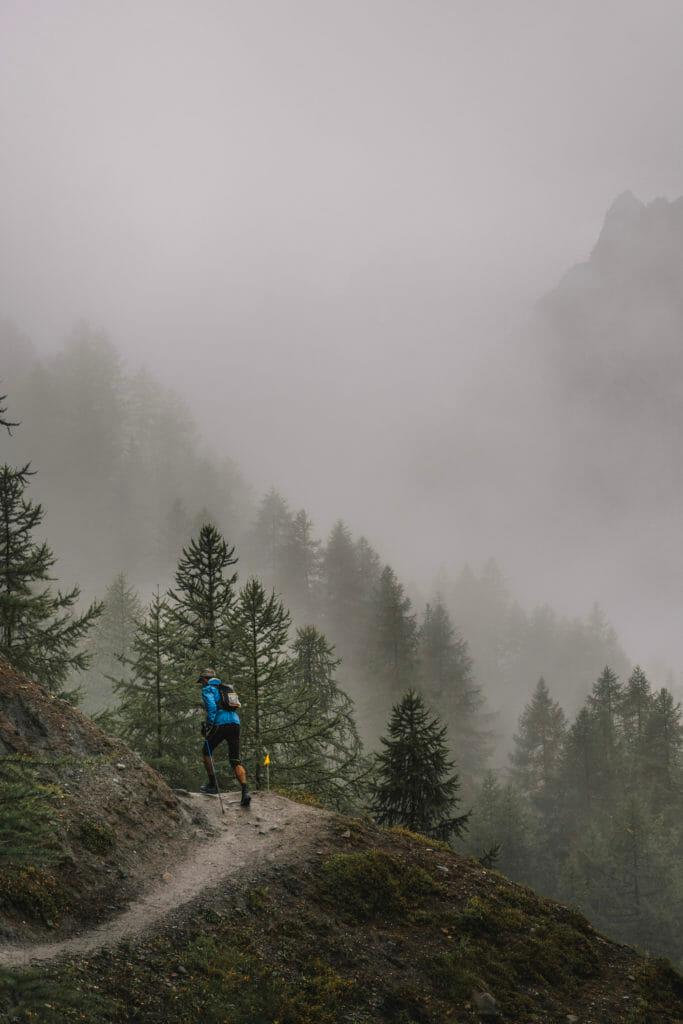

Edition Zero: Behind the Scenes Developing Tor des Géants
Editor’s note: This is the first of a series of articles about the unique history of Tor des Géants, and the experiences of runners who test themselves against the demanding mountain course. Sign up for Run the Alps emails to receive new stories as they are published.

Before the First Edition
The first edition of the legendary Tor des Géants saw 179 out of 300 runners reach the finish line in Courmayeur, Italy, after a grueling 330 kilometers and over 24,000 meters of elevation gain. The year was 2010. Now, with 10 more editions in the books, the race has become a well-known staple in the trail running community as one of the most challenging mountain ultras in the world.
What many don’t know is the year before that first edition of Tor, there was a “Zero Edition” with a grand total of four finishers. This wasn’t an official race. In fact, it was a trial run to prove the very concept. At the time, many considered the idea of the Tor route insane and flat out dangerous. They believed the race was too long and too challenging to constitute a healthy challenge for trail runners.
“There was a lot of skepticism about it,” says Pietro Trabucchi, one of those 4 zero edition finishers. A clinical psychologist at the University of Verona in the Department of Neurosciences, Biomedicine and Movement Sciences, Trabucchi studies endurance sports and resilience. He has summited Mount Everest, written a number of sports psychology books, and has coached Italian olympic, triathlon and ultramarathon teams. “Many people said that it was impossible. [They said] you will not survive, or that you will go to the hospital.”
One of those people was Patrizia Morelli, the Counsellor of the political party VdA Vive-Renouveau in Courmayeur. In a newspaper article at the time of the development of the Tor concept, she said, “Tor des Géants does not seem to be the right way to promote the Alte Vie. It is not a competition everyone can face. With the physical and mental effort it requires it seems to be a sporting event for high-level athletes. […] It would lead to the exact opposite of our objective: indeed, we want to tell the world that the Alte Vie are open to everyone who loves hiking and that they offer the opportunity to admire unique landscapes.”
However, a few in the budding Aosta valley trail running community were willing to consider the possibility. They wanted to find a way to make Tor happen.
First among them was then-President of the Courmayeur Trailers Association, later to become Valle D’Aosta Trailers, Allesandra Nicoletti.
“During a meeting of the Courmayeur Trailers, we had a map of the Aosta valley on the table in front of us,” said Nicoletti. Suddenly inspired, she traced a huge loop around Italy’s famed alpine region, encompassing more than 3,000 square kilometers. The route her finger traced connected two long-distance trails, the Alta Via, or “High Route” 1 and 2. Either would be a massive accomplishment by itself. The two together seemed almost incomprehensibly long to the group gathered at the association’s small clubhouse in Dolonne, just across the Dora Baltea river from Courmayeur. That original mapped trail was 350 km. “We thought this would be a beautiful course.”
“Then we started studying the possibility of doing it,” said Nicoletti.
Making Tor des Géants Possible – The Spirit of the Mountaineers
The goal of combining these two long distance trails? To give runners an opportunity to discover the beauty of the Aosta valley in a detailed, intimate way. “The spirit of the mountaineers was the initial spirit for Tor,” said Nicoletti. “It’s the spirit that lives in Aosta valley and permeates the race—friendship, sharing among volunteers, racers, [and] residents in the valle d’aoste.”
Nicoletti, along with fellow Courmayeur Trailer member Ermanno Pollet, and other Aosta valley trail runners spent a year figuring out how they could make the race possible. From testing little-known, rugged trail segments, to exploring the accessibility to possible aid station locations, they slowly, methodically worked out all the details, including mapping the distances between aid stations and villages.
Among their goals was the desire for what they called a “Life Base” every 30 kilometers or so. In time, they mapped the route in a way to make that possible, driving to each location in a Jeep to confirm accessibility. Nicoletti and Pollet then used computer software that incorporated vertical climbing and distance to estimate the time it would take for runners to get from one aid station to the next.
Once the Courmayeur Trailers team had decided among themselves the route was possible, they still had to convince local political leaders, who held the power to approve the event. “[The] Aosta Valley government, they had doubts about whether it could be done,” said Pollet. “We were sure it could be done, but we had to convince the politicians.”
So they proposed a test run — a run-through of the course that later became known as Tor’s “Zero edition.”
A Test Run of the Tor des Géants
And so, on Sunday, September 13, 2009, unsure of what the next 150 hours and 350 km would hold, four runners gathered on Italy’s pedestrian-only Via Roma: Trabucchi, Claudio Bastrentaz, Roberta Peron and Ornella Gabrielli. The four ran as a group, while Nicoletti and Pollet used a camper van and a truck to meet the runners with food and supplies at planned informal aid points.
It was not all smooth sailing.
“We had a lot of problems,” said Trabucchi. The team ended up battling almost constant rain. When it wasn’t raining, it was snowing, which obscured the trail. To complicate matters, fog reduced their visibility.
The weather added other challenges with accessibility, too. “During the test, we couldn’t go above Gressoney because of the weather— it was snowing up high,” said Pollet. Pollet and Nicoletti would have to get to the next accessible aid station and just wait, hoping to see the runners appear out of the fog.
Weather aside, the group had challenges with the route itself as well — there were entire sections that were essentially just lines on a map. According to Trabucchi, “There was an entire part that didn’t exist, really. Mainly, these were sections between the bottom of the valley by Gressoney.”
Over those 150 hours, Pollet said they started to find a routine that worked: “We waited for the runners, and when they arrived they would sleep, eat and move on.”
The quartet of runners then hit something well known to today’s runners of Tor des Géants– hallucinations induced by sleep deprivation. “But… you can manage hallucinations,” says Trabucchi. “Sometimes we laughed about, ‘Oh, I see a man with a dog!’ Of course, I knew that there [was] nobody there. It was not something that frightened me or the others, because you can adapt.”
That ability to adapt was what surprised Trabucchi the most by the end — that with the right training and enough motivation, people can adapt to accomplish mind-blowing physical challenges.
We have these first pioneers to thank for what has become Tor des Géants, undoubtedly one of trail running’s great mountain races, and indisputably one of the most challenging such events anywhere in the world. To this day, as it did that rainy week back in September 2009, Tor des Géants remains an opportunity for daring mountain runners to test their physical and mental boundaries and experience the extraordinary beauty of Italy’s Aosta Valley.
In the next article of our new Tor des Géants series, we’ll explore the rich history of VDA Trailers, the organization that powers trail running in the Aosta Valley. VDA Trailers formed as a direct outgrowth of the launch of Tor des Géants.

